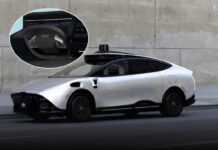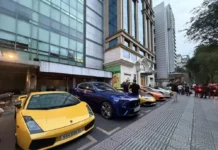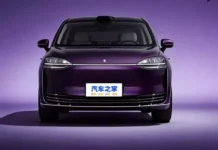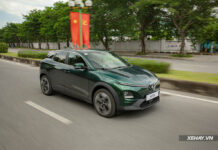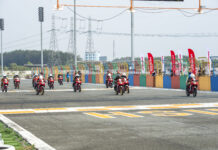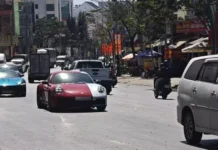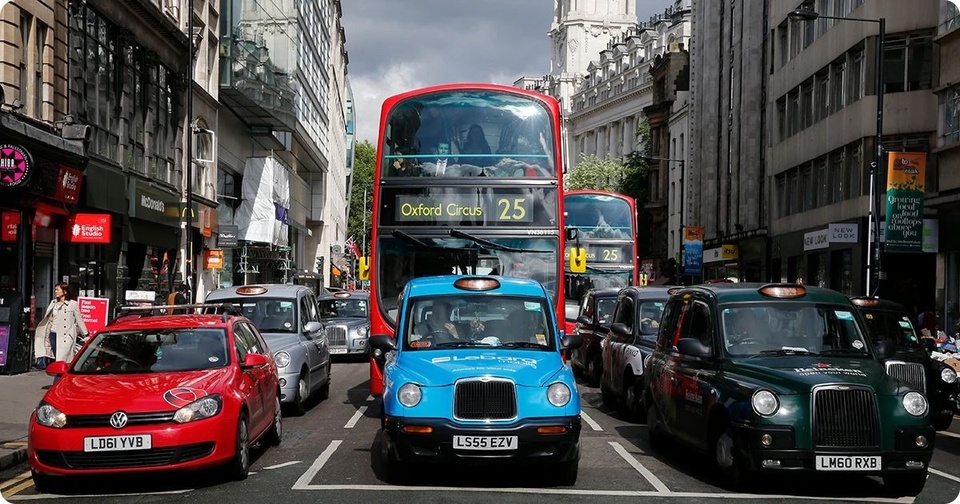
|
With rapid urbanization, many megacities around the globe are facing significant
challenges in managing their transportation systems. The combination of a
rapidly growing population, inadequate infrastructure, and insufficient public
transportation networks has led to chronic traffic congestion in some of the
world’s largest urban centers.
Istanbul, Turkey
Istanbul tops the list of the world’s most congested cities. This ancient city,
with a population of over 15 million, is characterized by its narrow streets
and intricate network of alleys. Poor urban planning, inefficient road design,
and subpar traffic light systems further exacerbate the problem. As a city
straddling two continents, Istanbul experiences frequent bottlenecks on its
bridges. Despite its location by a large strait, the city has yet to fully
utilize its maritime transportation potential.
|
|
|
Chronic traffic congestion in Istanbul. Source: Daily Sabal |
By improving its maritime infrastructure and reducing the strain on the
bridges, Istanbul could potentially alleviate some of its traffic woes.
New York, USA
New York City is renowned for its global influence in finance, media, and
culture, but it also bears the distinction of being one of the most congested
cities in the world. The city’s road network, constrained by its bridges and
tunnels, struggles to accommodate the sheer volume of vehicles trying to enter
and exit the city.
With a population of approximately 8.5 million people and an equally large
number of commuters and tourists, New York’s infrastructure has failed to keep
pace with its rapid expansion over the past two centuries. Despite possessing a
robust public transportation system, the city continues to grapple with
congestion as a significant proportion of its residents opt for private vehicles.
|
|
|
New York City’s high population density contributes to frequent traffic |
Chicago, USA
Chicago, the third most populous city in the United States, is a major tourist
destination known for its vibrant culture and diverse attractions. However, its
popularity comes at a cost, as the city struggles with chronic traffic
congestion. With approximately 9.5 million residents and workers, Chicago’s
highways are often jammed during weekends as people flock to the city’s
downtown area for leisure activities. The city also experiences significant
congestion during rush hours.
|
|
|
Lengthy traffic jams are a common occurrence in Chicago. Source: Block Club |
Similar to New York, Chicago boasts an extensive public transportation system,
but the majority of commuters rely on private vehicles, particularly on
highways such as the Kennedy and Eisenhower, leading to severe congestion.
Mexico City, Mexico
As the largest and most populous city in Mexico, Mexico City grapples with daily
traffic congestion. The city’s infrastructure struggles to accommodate the vast
number of vehicles on its roads, many of which are centuries-old and too narrow
for modern traffic.
The city’s unique topography, with houses and roads built on hillsides, some
legally and others illegally, further complicates the situation. This
haphazard development, particularly in the city center, exacerbates the
congestion caused by inadequate infrastructure.
|
|
|
Outdated road networks and uneven urban planning contribute to Mexico |
While Mexico City has a modern network of subways and buses, it is insufficient
for its massive population. As the economic center of Mexico, the city attracts
a large number of commuters, accounting for 17% of the country’s population.
Additionally, frequent protests, parades, and cultural and sporting events
further contribute to the city’s traffic woes. The local government is currently
working on improving its public gondola system to alleviate some of the
congestion, but the effectiveness of these measures remains to be seen.
London, United Kingdom
London, one of Europe’s most congested cities, is renowned for its iconic
landmarks and bustling city center. The city’s roads, particularly those in the
historic core, are frequently jammed with tourists and locals alike. As the
economic hub of the UK, London attracts a large number of commuters and
investors, placing a significant strain on its transportation infrastructure.
London’s antiquated road network, with many streets dating back hundreds of
years, is ill-equipped to handle modern traffic volumes. The city’s roads are
often narrow and winding, contributing to frequent bottlenecks. In recent
years, the local government has implemented congestion charge zones in the city
center to discourage driving in congested areas.
|
|
|
London’s popularity as a tourist and business destination contributes to |
Brussels, Belgium
Brussels, the capital of Belgium, has earned the dubious distinction of being
one of Europe’s most congested cities. The main culprit behind the city’s
traffic woes is the government’s decision to impose a 30 km/h speed limit
throughout the city center, a measure intended to improve road safety.
However, this has had the unintended consequence of increasing congestion.
Additionally, Brussels’ road network is outdated and has not been expanded to
accommodate the large number of vehicles entering the city.
Recommended Reads for Your Commute
Our Automotive section presents an array of captivating books spanning
diverse genres. Whether you’re embarking on a long journey or simply seeking
a momentary escape, these literary companions are sure to enrich your
travels.
The Prime Minister Calls for AI Integration in Traffic Violation Detection
Prime Minister [Name] has instructed the police and relevant authorities to step up patrols and enforce strict legal action against those who violate traffic rules and cause serious accidents. This directive emphasizes the government’s commitment to road safety and sends a strong message to deter reckless driving and ensure the well-being of all citizens.




